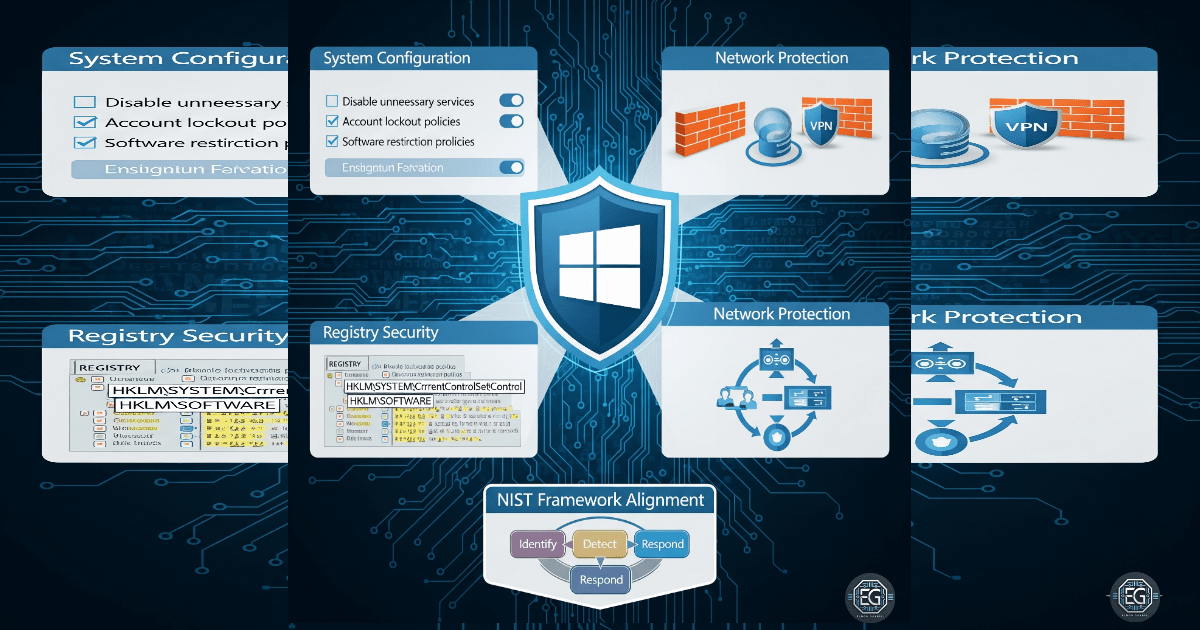Today, I want to share how I recently completed a project on Windows security hardening. This report covers best practices for the Windows operating system. This was a hands-on exercise from my MCSI exercises. I looked into system configuration, network protection, and registry security.
Many people use Windows, making it a frequent target for hackers. Knowing how to secure it helps protect computers and is an important part of any cybersecurity strategy.
Key Principles Learned
- Principle of Least Privilege (PoLP): Users and systems should only have the access needed for their tasks. Regular users should not have admin rights.
- Centralized Management: GPOs and Active Directory apply security settings to all devices consistently.
- Attack Surface Reduction: Removing unnecessary roles, features, and services lowers potential entry points for attackers.
- Network Segmentation: VLANs split a network into isolated sections, containing attacks and preventing threats from spreading.
Cybersecurity Applications
- Threat Modeling: Hardening Windows systems helps identify vulnerabilities, such as overly open firewall rules.
- Risk Management: Strong passwords and multi-factor authentication reduce the risk of account compromise.
- Incident Response: Properly configured systems provide clear logs for SOC teams to trace and respond to attacks.
Alignment with Industry Frameworks
- NIST Cybersecurity Framework: Security hardening covers access control, vulnerabilities, and data protection.
- Governance, Risk, Compliance (GRC): Standard security baselines support compliance and improve risk management.
- Cybersecurity Roles: This knowledge is essential for SysAdmins, Security Engineers, and Auditors.
Next Steps
I will apply these principles in upcoming labs and document my hands-on results in my portfolio. Proactive security measures are key to protecting both organizational and personal data.


